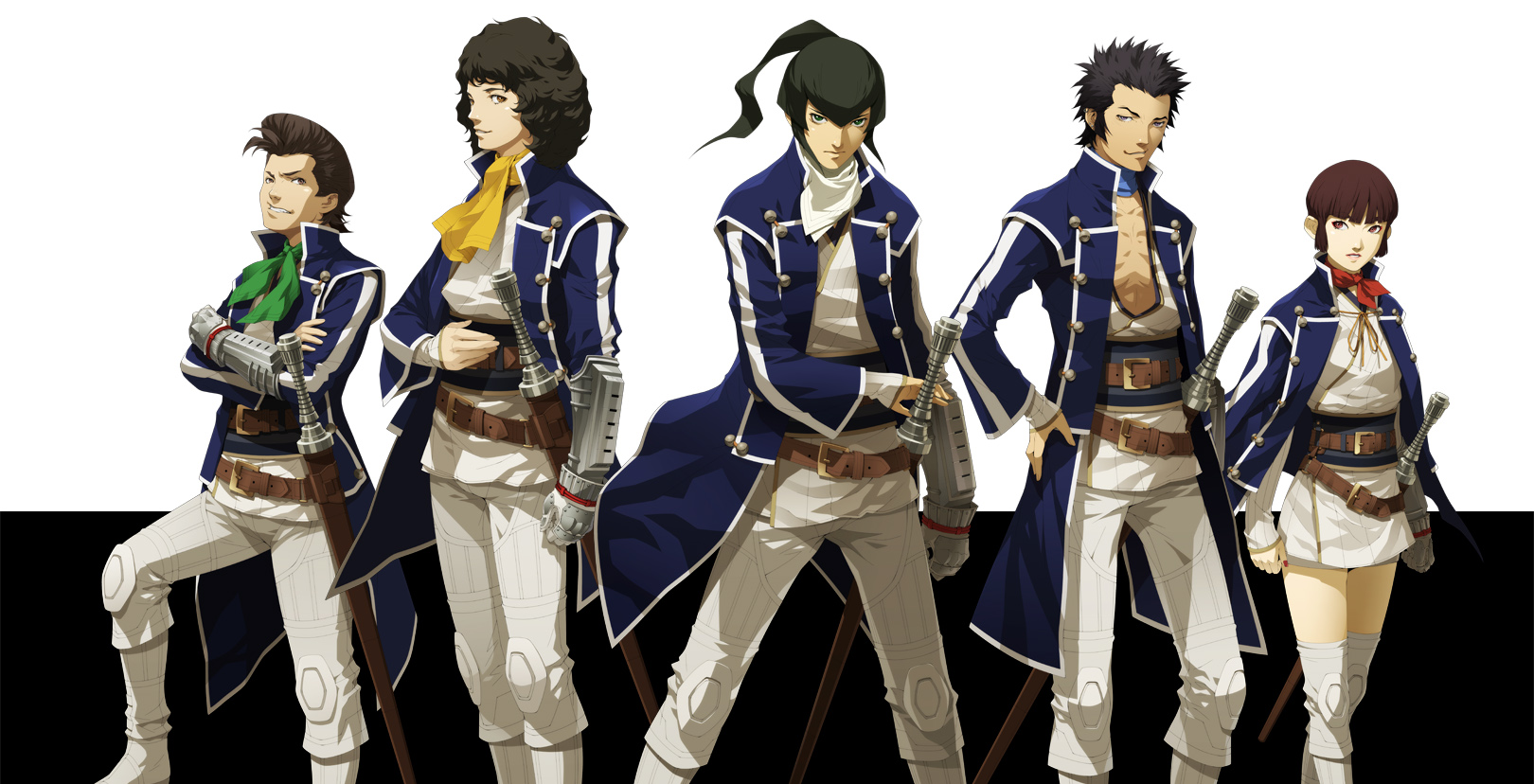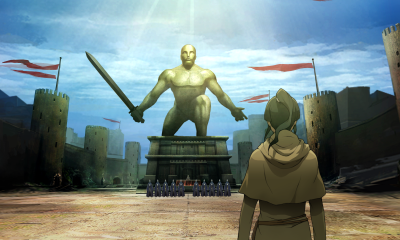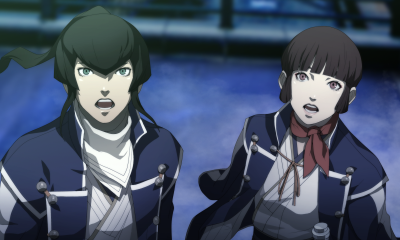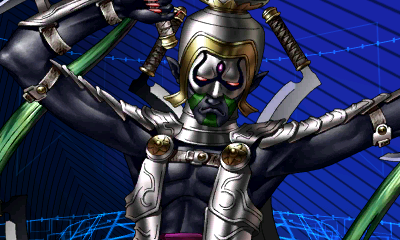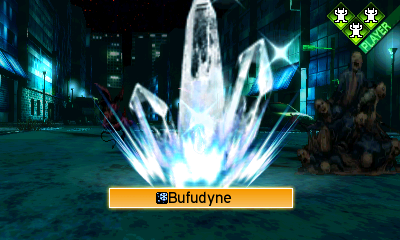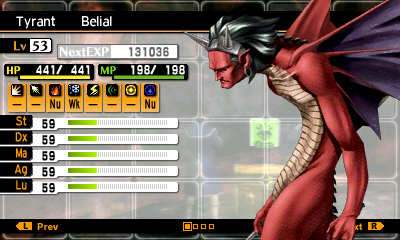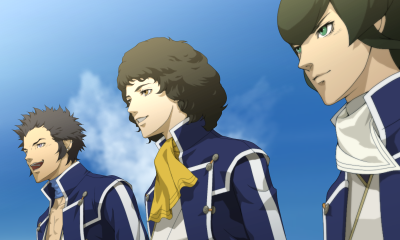Shin Megami Tensei 4 review
The average ocean depth is just over 2.5 miles, with the deepest sections more than twice that. Shin Megami Tensei 4 lives in the black abyss of the Challenger Depth, and loves it. Everything about SMT 4 is deep. The story is full of twists and turns and involves a host of characters. The combat is involved and deliberate. The customization is immense and at times exhausting. All-in-all, everything you would expect from the next Shin Megami Tensei game, which have never been for the faint of heart.
Story:
SMT 4 begins with the protagonist and his friend travelling in an attempt to become Samurai, a group of warriors that controls demons to fight other demons, so they aren’t necessarily anti-demon, expect they are… It’s complicated. The main character succeeds in becoming a Samurai while his friend goes home disappointed. You then begin your training in the fictional Eastern Kingdom of Mikado, which has a cave filled with demons that the Samurai are in charge of guarding and occasionally culling the demons inside. The story begins in full once demons are spotted outside the cave and the hero and his crew and thrust into a world-changing adventure.
As you would expect from a JRPG, the story is complex and interesting, although it is up to the player to discover most of the subtleties of the plot. As you travel through the world, there are people you can talk to, and they supply you with little bits of information about events and characters, like when such and such happened or a different perspective on the situation. It reminds me a lot of Bioshock Infinite where you are rewarded with pieces of information for exploring the world. Also, like Bioshock Infinite, the story can get a mite confusing at times. Characters and factions are introduced into the story frequently, usually as you progress into new areas, and it takes a while to figure out who they are, what they are trying to do, whom they hate, and why they hate them. Questions about the story are introduced just as often as they are answered, so you are kept guessing right up until the very end. The story itself can be somewhat traditional at times, but it is kept alive by the decisions you are forced to make as you play.
As you progress through the story, you are faced with a myriad of decisions, some of which seem inconsequential but end up having large impacts. The decisions you make affect not only the attitude of your friends, but also the ending of the game. Since there is little to no indication how each decision will affect the world, many of the decisions are very difficult to make. Do you spare the life of the demon that tried to kill you? Do you try to fight or talk your way out? This system is far better than a polar “Good – Evil” scale, since it allowed me to make the decisions I would honestly make and not be penalized for not always picking one side. This lets the story unfold organically and it is fun to see the affects your decisions have on the world around you. The side effect of this style of story progression is that there is LOTS of dialogue, and only a fraction of it is voice acted, so be prepared for a hefty amount of reading. The story is well written, making is worth your time to read through it all.
Presentation:
The graphics are a mix of full 3D as you are navigating areas and 2D sprites in combat, dialog and everywhere else. There really isn’t much to say about the visuals in SMT 4. The 3D looks fine for the 3DS. I wasn’t blown away, but they definitely didn’t detract from the overall experience. Changes in equipment alter the appearance of your character model, which is cool until you find a really good headpiece that looks dorky, and you have to stare at it for the next couple of hours of gameplay. The sprites used are either the exact same, or very similar to the sprites used in other SMT games. Iconic demons are recycled from previous SMT games like Nocturne or Persona 4, which is great for the nostalgia factor, but also a little boring. The few demons I didn’t recognize look good as well, and as usual you have your fair share of scantily-clad lady demons, but it wouldn’t be an SMT game without it.
Like the visual effects, the sound was nothing amazing, but not bad at all. The voice acting can be awkward at times, some lines are overly forced or otherwise unnatural, but overall I preferred to listen to them. The music and combat sounds fit well into the game and surprisingly, even after more than 24 hours of gameplay, I still preferred to play with the sound on (although, the tinny “ding” that plays whenever one of your characters misses will fill me with rage in some sick Pavlovian reaction for a long time).
Gameplay:
SMT 4 is hard. Very, very hard. If there is one thing I want to get across in this review, is that this game is not for the easily frustrated or weak willed. The combat features the Press Turn system very similar to the one in Persona 4 (also a difficult game) where each member of your party gets one turn. When you attack, if you get a critical hit, or exploit one of your opponents weaknesses you get an extra turn, up to one extra turn per person, so in theory you could get up to eight attacks per turn. This system also works against you, so if you go into a fight and one of the enemies can exploit one of your demon’s weaknesses, you probably just died. The enemy will find that weakness and use it to kill your entire party. On the other end, if you use an attack that the enemy is resistant to, or the game decides it’s about time for you to miss, you lose the attack and one additional turn. This leads to very unforgiving gameplay, where one mistake causes your party to lose their turns, then get pummeled into the ground by what appear to be floating water balloons. So save often! Boss fights end up being a game of “find the weakness” which may or may not take multiple reloads. But once you find the appropriate weakness, you can whip a team together that have the right element attack, then the fight becomes winnable. Not easy mind you, but do-able. And if you still can’t do it, get ready for some grinding.
Luckily, death isn’t necessarily a game over. When your entire party is wiped out you end up in the spirit world where Charon, the ferryman who carries souls to the afterlife, will cut you a deal for a bunch of your money, or a few Play Coins, to return you to life immediately before you the fight that killed you. This system is great in theory. It falls apart when you realize that giving up a bunch of your money so you can’t buy new gear might as well be a death wish anyways and that the death cutscene is much longer than just exiting the game and re-loading from where you last saved. This lead me to saving unspeakably often and just rebooting the game every time I died. When you die the second time, you will get off for free, but Charon’s guards mock you and introduce the “Difficulty” setting. Shove off guards! You know how hard this game is (Though, just to spite them, I never used the difficulty options)!
Another way SMT 4 cements the “Hardcore RPG” title is the general lack of direction. At a disturbing frequency you will pick up quests with unclear objectives. “Continue searching for (spoilers).” Continue searching? What does that mean? Continue searching where? Apparently it means wander around until you get so frustrated you look it up online. During my play through there were many times I reached for my laptop to look up a walkthrough, yet I was disappointed to find that there weren’t any translated Japanese walkthroughs (luckily there was a few people discussing where I was stuck on an obscure forum, so I was saved). This lack of direction also significantly affects the plentiful Challenge Quests. Challenge Quests seem to be simple side quests, like kill x of y or find item z, which is fine until the lack of direction causes you to just wander aimlessly looking for the proper enemy to defeat. To make matters worse, you can only do a specific Challenge Quest after you’ve accepted it, and you can only have one quest accepted at a time, so you can’t just wander around and do all of the side quests in one sweep since enemies for Challenge Quests don’t appear until you’ve accepted it. Also you can only do one quest at a time, including the main story quests. So, if you accidentally stumble upon an area that will advance the storyline, you have to finish your side quest or abandon all progress to advance the story. This can get frustrating since some quests take a very long time to complete because of the vague instructions. And don’t mistake Challenge Quests to always be side quests like I did. No sir, some of them are required to be completed to reach the next plot area, but the game doesn’t tell you this. You’re supposed to figure it out. So buy a strategy guide or have a good walkthrough handy. It will save you a bunch of pain, frustration and desperate wandering.
SMT 4 has a lot of negatives, but even they don’t manage to completely obscure the positive aspects of the game. There is just immense amounts of customization. There are over 400 demons in SMT 4 and almost all of them are recruitable onto your team. Then you can combine those demons together to create other, usually higher level, demons. As motivation to continually switch out and level different demons; when a demon learns all of its abilities, the demon can teach your main character the abilities that he/she knows, and if your character already knows one, it gets leveled up. This encourages you to constantly change out your demons for new ones. You can get new demons by negotiating with enemies as you are fighting them, which can seem like a crap-shoot because the correct answers to the demon’s questions seem to be random, or by combining the demons you already have. Combining demons is fun, and, again, gives you loads of options. There are tons of demons to create and abilities from the parent demons transfers over to the child, so combining demons isn’t just deciding which demon you want, but also how you want to fill their ability slots. You can also customize your equipment, and buy abilities with App points you get when you level up. I have not seen this level of customization in a game in a very long time. It makes the game incredibly compelling and drives you to level up just one more time to see what cool demons lay just around the corner.
Don’t let this review scare you off from playing Shin Megami Tensei 4. I actually enjoyed my time with it quite a bit, but it is definitely made for the RPG enthusiast. The absolutely absurd level of customization is easy to get caught up in and the advancement system is compelling enough to encourage you to continue playing. The story kept me interested until the end, and some of the twists and turn honestly caught me by surprise. The game just keeps getting in its own way. The hardcore difficulty keeps combat intense but causes lots of downtime as you are reloading or sitting through death cutscenes. The lack of direction can be easily be remedied with a walkthrough or a strategy guide but the fact that outside information is almost required is just sad. If you have played other SMT games and love them, or are excited by the possibility of colossal amounts of customization and rewarding advancement, this is the game for you. If this is your first forray into the SMT series or are inexperienced with RPGs in general, I would tread lightly, and please, please, please save often.

